Donghwasa Temple – 동화사 (Dong-gu, Daegu)
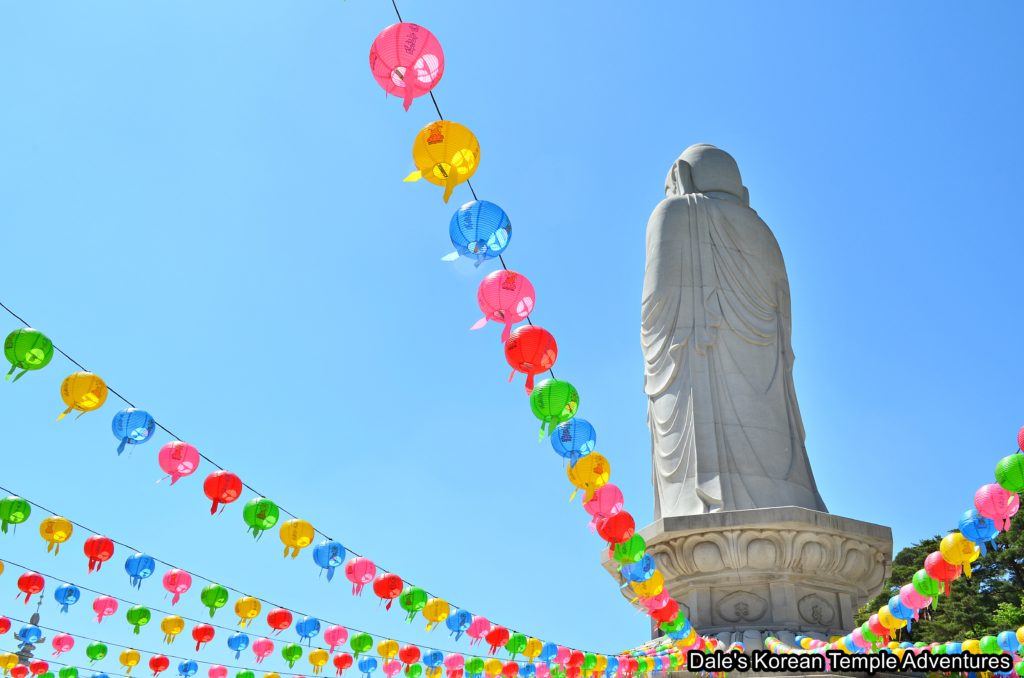
Temple History
Donghwasa Temple is located on the southern slopes of Mt. Palgongsan (1193m) in Daegu. The name of the temple means “Paulownia Blossom Temple” in English. Originally, the temple was built in 493 A.D. by the monk Geukdal and was named Yugasa Temple. However, it was later rebuilt in 832 A.D. by the monk Simji in 832 A.D. The name of the temple refers to a legend around the time of this reconstruction. According to this legend, and during the dead of winter, wild paulownia trees were in bloom all around Donghwasa Temple during the temple’s reconstruction. This was thought of as an auspicious sign.
According to the Samguk-yusa, Master Jinpyo (8th century) gave bones with sutras written on them to the monk Yeongsim. Yeongsim, in turn, then gave them to the monk Simji. Trying to decide where he should enshrine these bones, Simji climbed a mountain. On top of this mountain, Simji scattered them to the west. The bones flew in the air and landed in a small well just north of what became Donghwasa Temple. Afterwards, Simji built a shrine hall and enshrined the bones within it. This, according to legend, helped created Donghwasa Temple.
In Later Baekje (892-936 A.D.), the kingdom attacked the Silla Kingdom. Responding to Silla’s pleads for help, Wang Geon (877-943 A.D.), King Taejo (r. 918-943 A.D.), stayed at Donghwasa Temple to fight against the Later Baekje troops. However, Wang Geon suffered a crushing defeat at the hands of the Later Baekje army.
Later, in 1190, the famed monk Bojo (1158-1210) stayed at Donghwasa Temple to oversee a large reconstruction and renovation of the temple. Throughout the years, Donghwasa Temple has undergone several rebuilds including in 1606 when Samyeong-daesa (1544-1610) helped repair the damage inflicted on it during the Imjin War (1592-98). It’s from this date that many of the shrine halls at Donghwasa Temple date back to. In total, Donghwasa Temple is home to some eight Korean Treasures, which uniquely, are mainly murals.
Temple Layout
When you first approach the temple grounds, you can head either left or right at a fork in the path. I’d suggest heading left first towards the more historic part of the temple is that way. Your first encounter with the temple is a large Cheonwangmun Gate. While the Four Heavenly Kings are unique in that they’re rather portly, it’s the demons that they’re trampling under foot which are even more artistically impressive with bulging eyes and gnashing of teeth.
Continuing towards the main hall after passing through the Cheonwangmun Gate, you’ll next come to the Bongseo-ru pavilion. This pavilion is named after the phoenix, which is “bonghwang,” in Korean. On either side of the stairs that lead under this expansive pavilion, the railings are designed as dragons. In the centre are a pair of stone phoenixes. To the right of these stairs is the temple’s elevated bell pavilion.
Having finally mounted these stairs, you’ll now be standing in the main temple courtyard. Straight ahead is the large main hall, the Daeung-jeon Hall, which dates back to between 1727 to 1732. The front latticework is beautifully adorned with floral patterns, and the Daeung-jeon Hall is Korean Treasure #1563. The exterior walls to this hall are illustrated with various paintings which include the Shimu-do, Ox-Herding, murals. As for the interior, Seokgamoni-bul (The Historical Buddha) sits in the centre of the main altar. This statue is joined on either side by Amita-bul (The Buddha of the Western Paradise) and Yaksayeorae-bul (The Buddha of Medicine, and the Eastern Paradise).
To the left rear of the Daeung-jeon Hall, and up a set of stairs, you’ll find the Josa-jeon Hall. This hall houses portraits of important monks that once called Donghwasa Temple home like Samyeong-daesa and Bojo. In fact, the original paintings of Bojo is Korean Treasure #1639, and the painting of Samyeong-daesa is Korean Treasure #1505. The painting of Samyeong-daesa dates back to 1796.
Behind this hall is the newly built Chilseong-gak Hall. This hall houses a beautiful new painting dedicated to Chilseong (The Seven Stars). And immediately behind the main hall is the Sanshin-gak Hall. Inside this hall is a nice looking mural of Sanshin (The Mountain Spirit).
Now, retracing your steps all the way back to the entry of the temple where the pathway forked to the left and right and you went left, well now, you should head right. Down a long set of stairs, you’ll come to an artificial pond with a beautiful collection of cascading falls. A bit further along, and past the elevated monument dedicated to the monk Inak to your left, you’ll come to a bend in the pathway that heads towards the spellbinding centrepiece of Donghwasa Temple.
Up another set of stairs that run alongside the temple’s museum, you’ll finally come face-to-face with the thirty metre tall stone statue of Yaksayeorae-bul (The Medicine Buddha). This massive stone Buddha was created in hopes of re-unifying the Korean peninsula. It was completed in November, 1992. The statue is joined out in front by a beautiful fountain with Gwanseeum-bosal (The Bodhisattva of Compassion) crowning it. To the left, and still out in front of the Buddha of Medicine, are two equally massive stone pagodas that measure seventeen metres in height. These pagodas, in turn, are joined by a pair of stone lanterns that are 7.6 metres in height. Everything about this outdoor shrine is huge. And surrounding Yaksayeorae-bul is a semi-circle of stone reliefs of guardians. Inside this stone enclosure, and tucked away underground, is Donghwasa Temple’s Seon meditation centre.
Admission to Donghwasa Temple is 2,500 won for adults. And the temple is open from 8 a.m. to 5 p.m.
How To Get There
From the Seobu Intercity Bus Terminal, which is on the west side of Daegu, you’ll need to take the Daegu subway system, Line #1, heading towards Anshim, and get off at Ahywanggyo Station. From here, take Express Bus #1 to get to Donghwasa Temple. The ride should take about 35 minutes, and it brings you right up to the temple.
Overall Rating: 9.5/10
This temple is impressive in so many ways, and it’s the most impressive temple on the historic Mt. Palgongsan. With a large collection of Korean Treasures, and the massive Yaksayeorae-bul statue and shrine, you’ll want to definitely head to northern Daegu to check this amazing temple out.
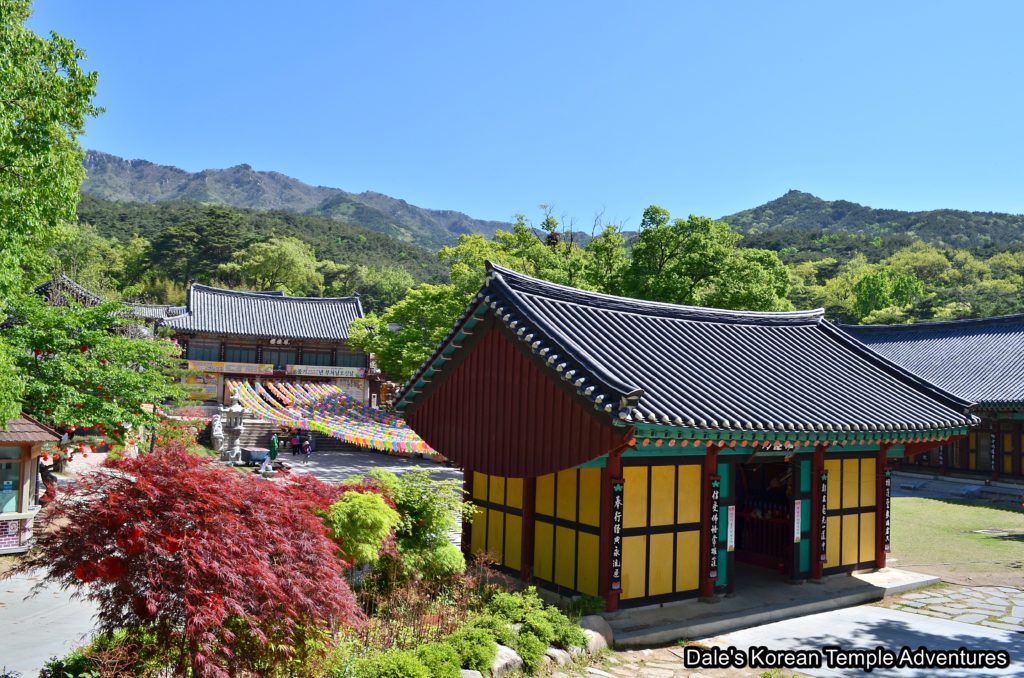
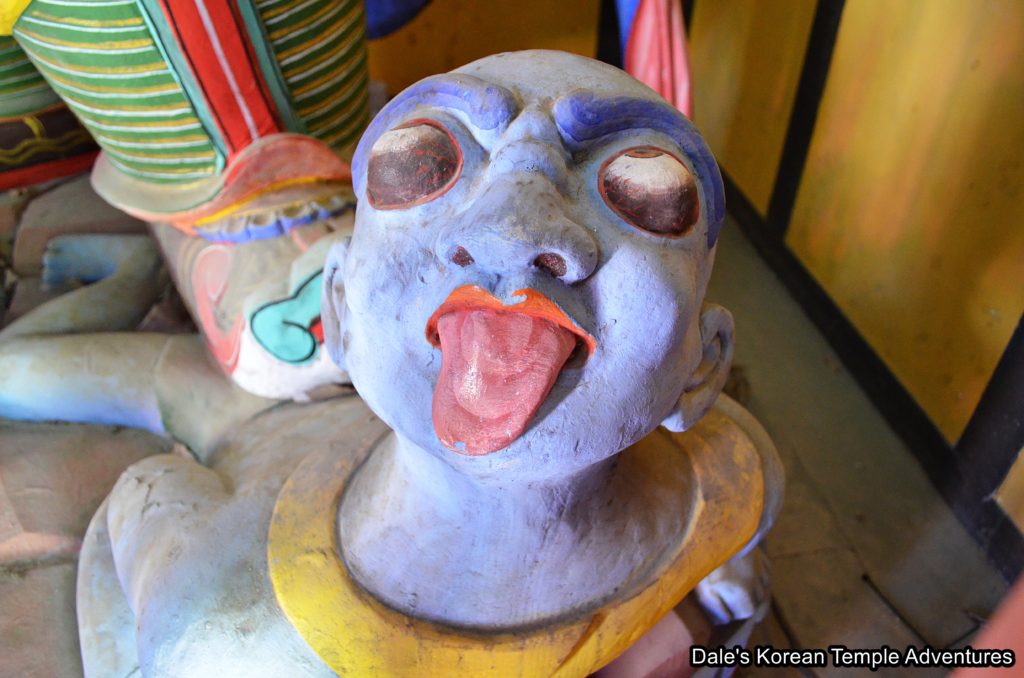
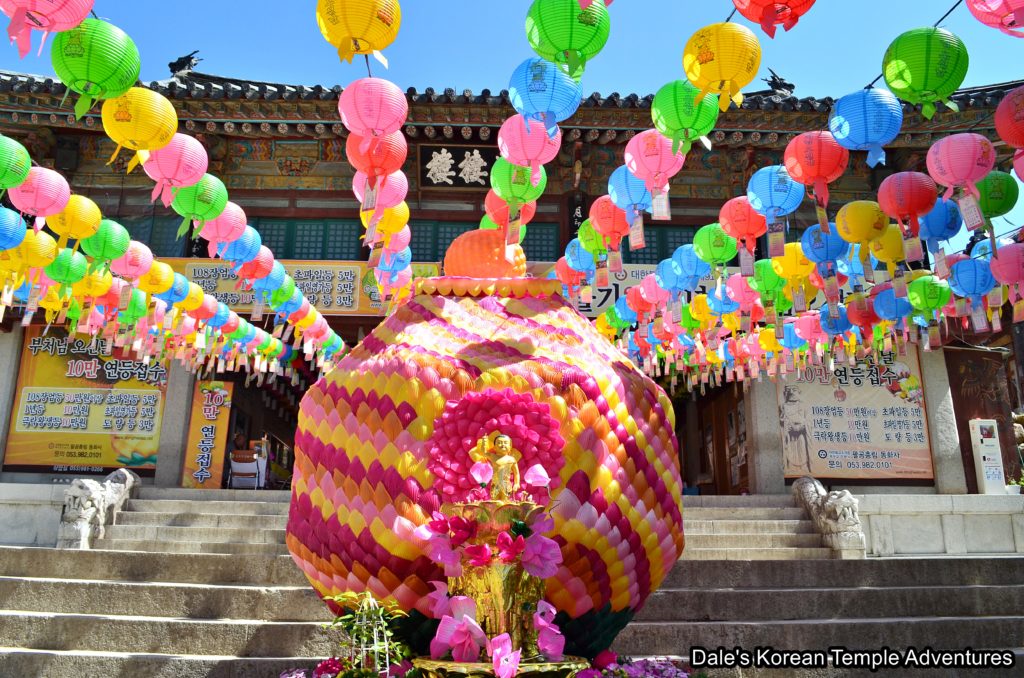
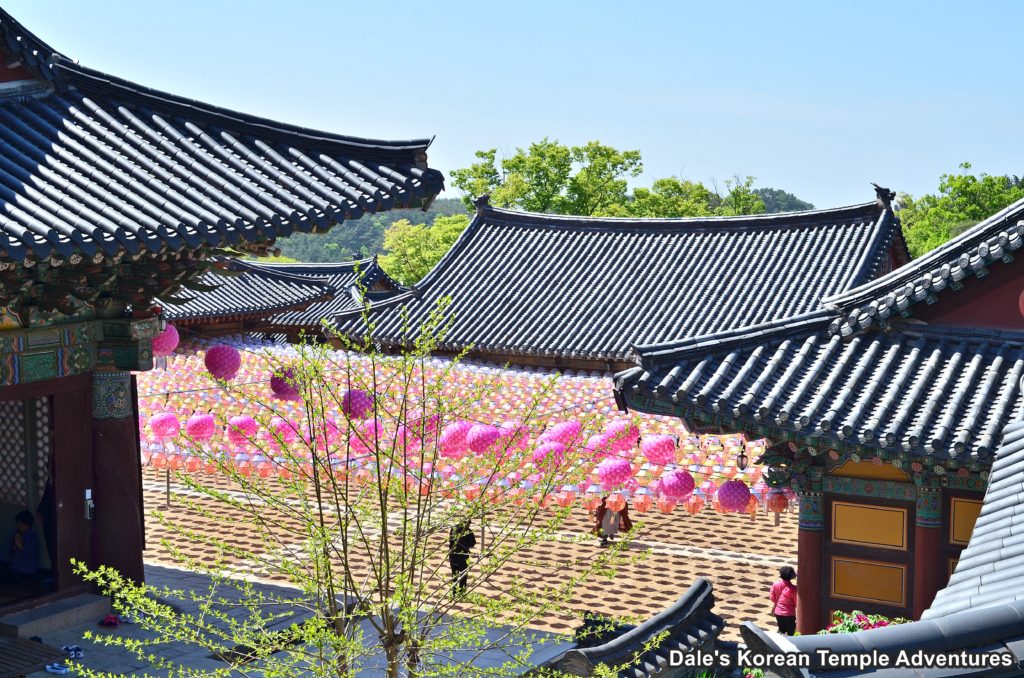

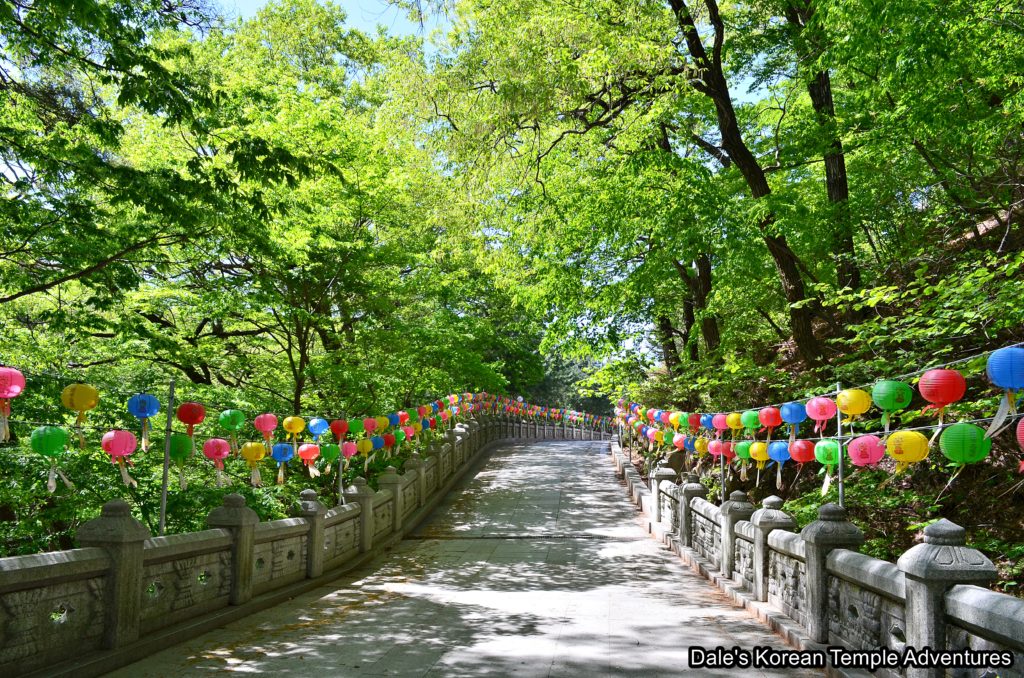
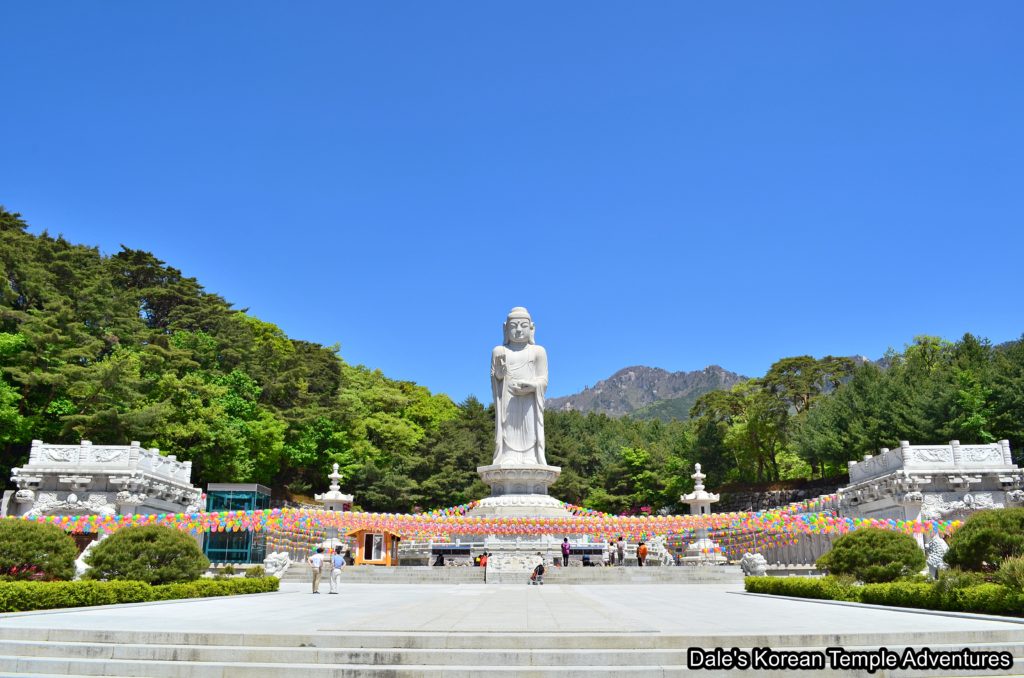
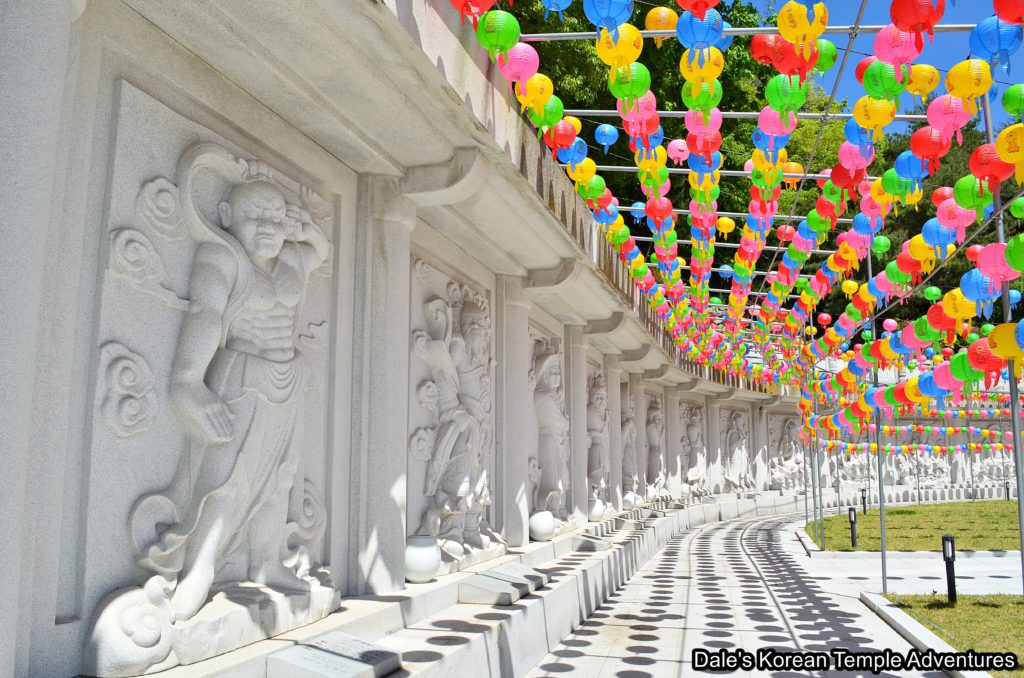

One Comment
Pingback: